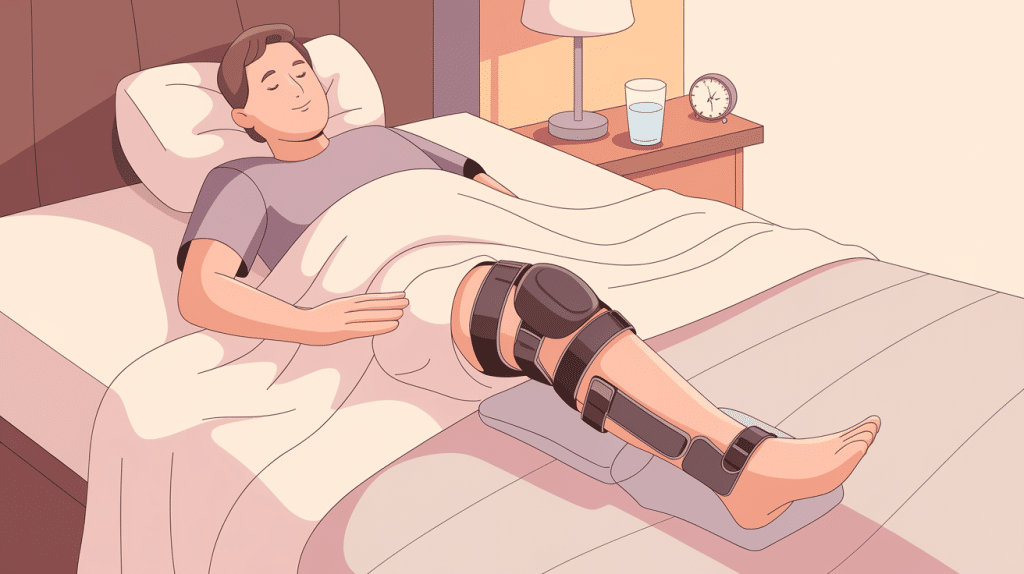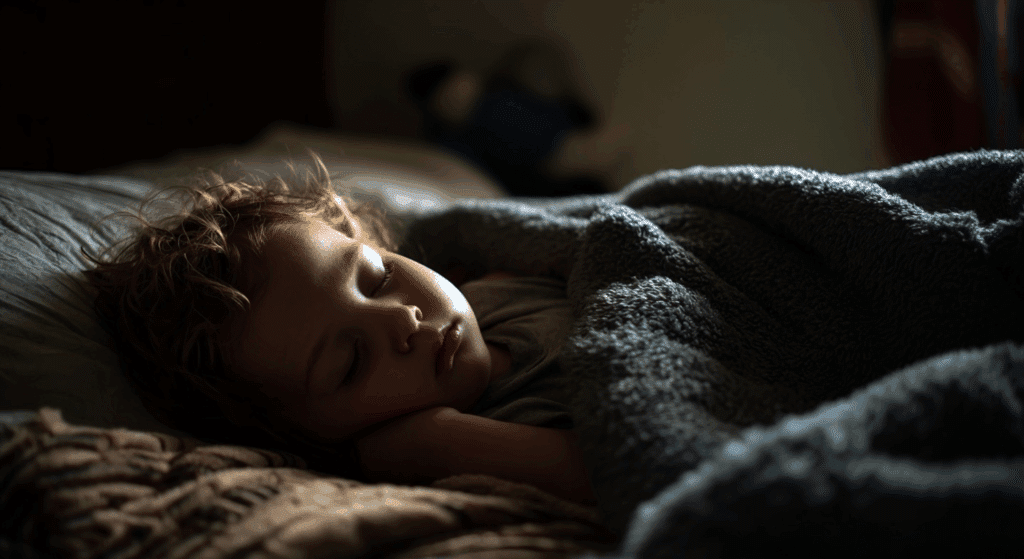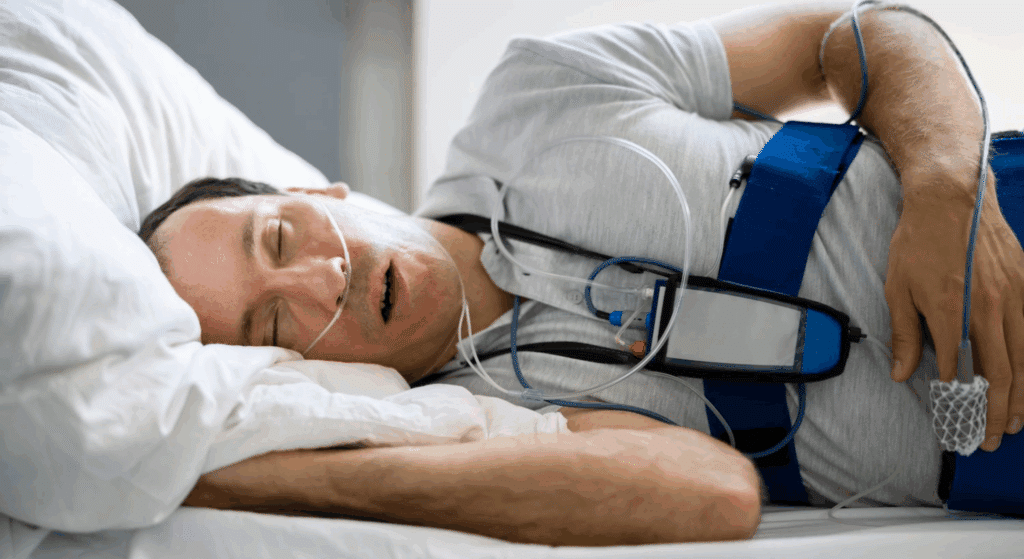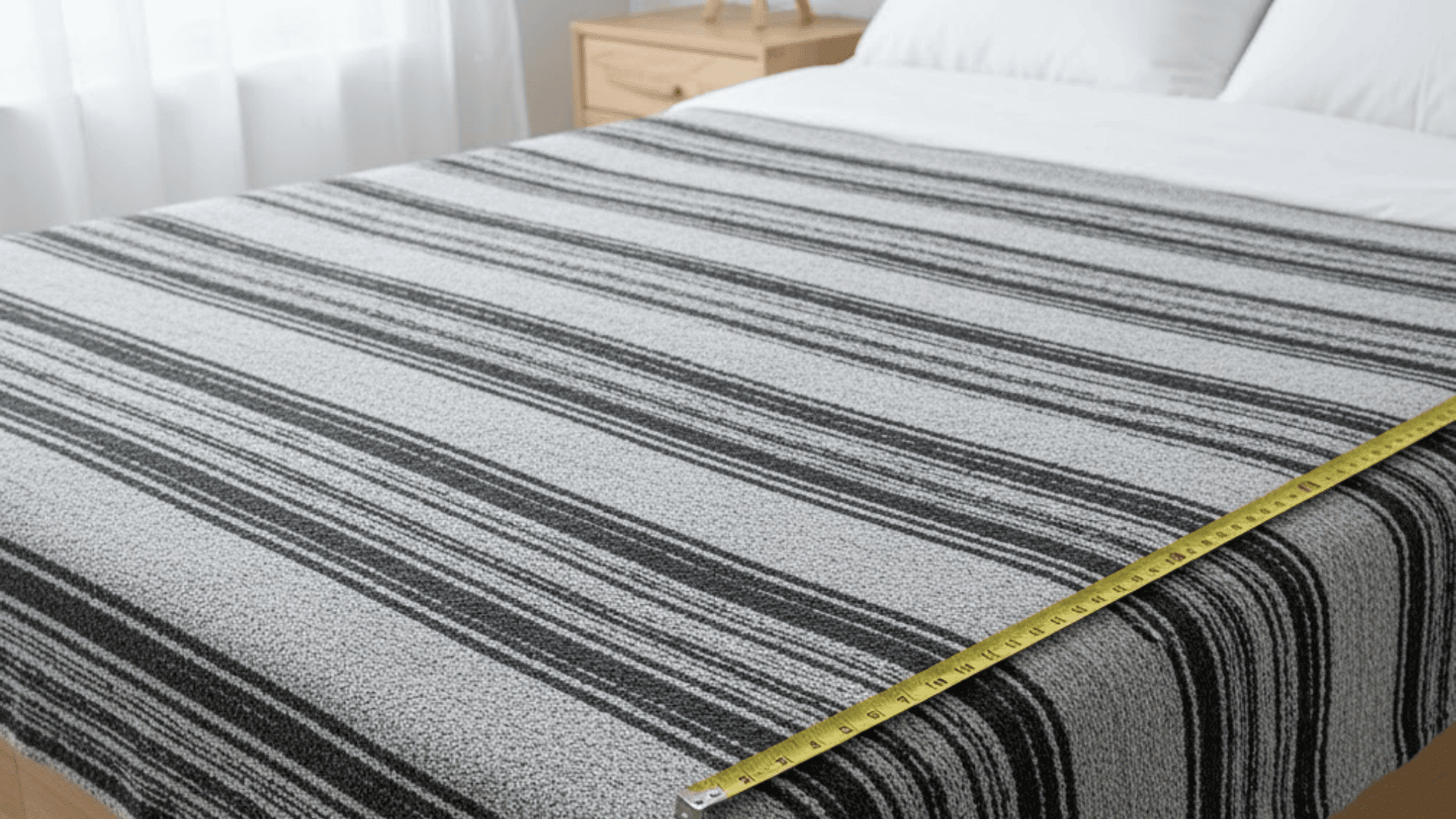Can’t seem to get comfortable in bed after knee surgery? I’ve been there, and I know how hard it can be. Between the pain, swelling, and that bulky brace, sleeping after a meniscus repair can feel impossible. But getting good rest is key to healing.
That’s why I put together this guide on how to sleep after meniscus surgery without slowing down your recovery.
I’ll walk you through the safest sleeping positions, how to reduce pain and swelling, whether to keep that brace on at night, and how to set up your bed for better support and comfort.
By the end, you’ll know what helps and what to avoid, so you can finally rest easier and heal faster.
Why Sleep is Crucial for Meniscus Surgery Recovery
Getting solid sleep after meniscus surgery isn’t just about feeling rested; it’s a key part of healing.
Your body does most of its repair work while you sleep, especially during deep sleep stages. This is when important hormones, like growth hormone, are released to help rebuild damaged tissue, including the cartilage in your knee.
The Role of Sleep in Healing
Sleep gives your body the time it needs to reduce inflammation and support tissue repair. That’s especially important after knee surgery, where healing is slower due to limited blood flow in the joint.
If you’re not sleeping well, your recovery may take longer, and you might notice more stiffness and swelling throughout the day.
Good sleep also helps with pain control. When you’re well-rested, you’re better able to handle discomfort. On the other hand, poor sleep can make pain feel worse, both physically and emotionally.
Why Sleep is Often Disrupted After Surgery
It’s very common to have trouble sleeping after a meniscus procedure. Many people struggle with torn meniscus pain at night, which can feel sharp, aching, or tight. That discomfort makes it hard to get into a relaxed position, especially in the first few weeks after surgery.
Wearing a knee brace to bed can also affect your comfort. It limits your ability to move around or shift positions naturally. Some people also feel anxious about bending the knee the wrong way in their sleep, which adds to the tension.
Swelling is another factor. When your leg isn’t elevated properly, fluid can build up and make the knee feel heavy or throbbing by bedtime.
All of this makes rest more challenging during recovery, but with the right adjustments, better sleep is possible.
How to Sleep After Meniscus Surgery: Best Positions
Knowing how to sleep after meniscus surgery is key to easing pain and helping your knee heal. Your sleeping position can either support your recovery or slow it down. Here’s what you need to know:
Back Sleeping (Recommended)
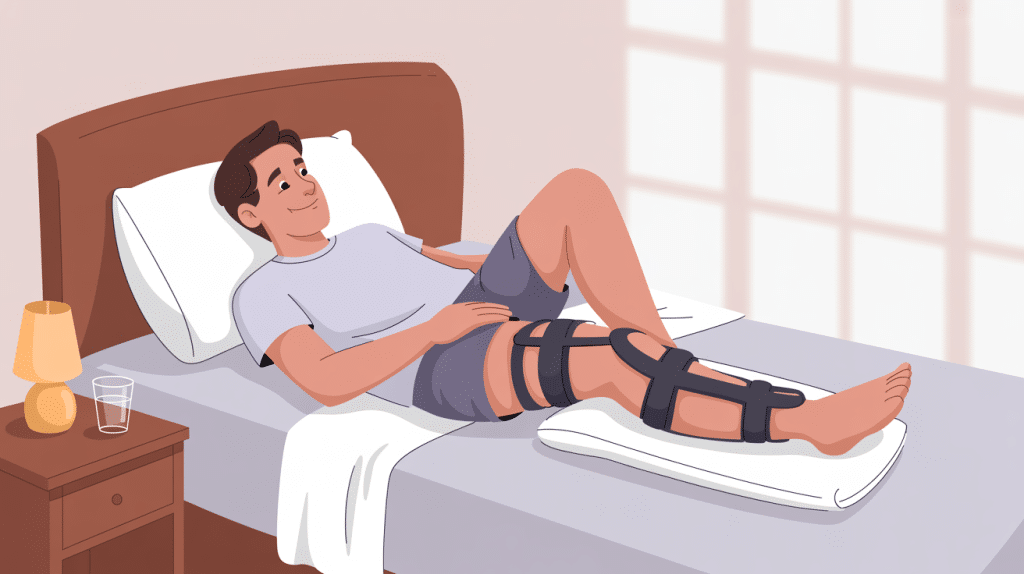
The safest way to sleep during recovery is on your back. This position keeps your leg straight and stable, which protects the healing joint.
To make it more comfortable, place a pillow under your calf and ankle. Don’t put anything directly under your knee, as that can cause stiffness or pressure.
If your doctor gave you a knee brace, wear it while you sleep unless told otherwise. It helps limit motion and keeps the joint supported through the night.
Side Sleeping Tips
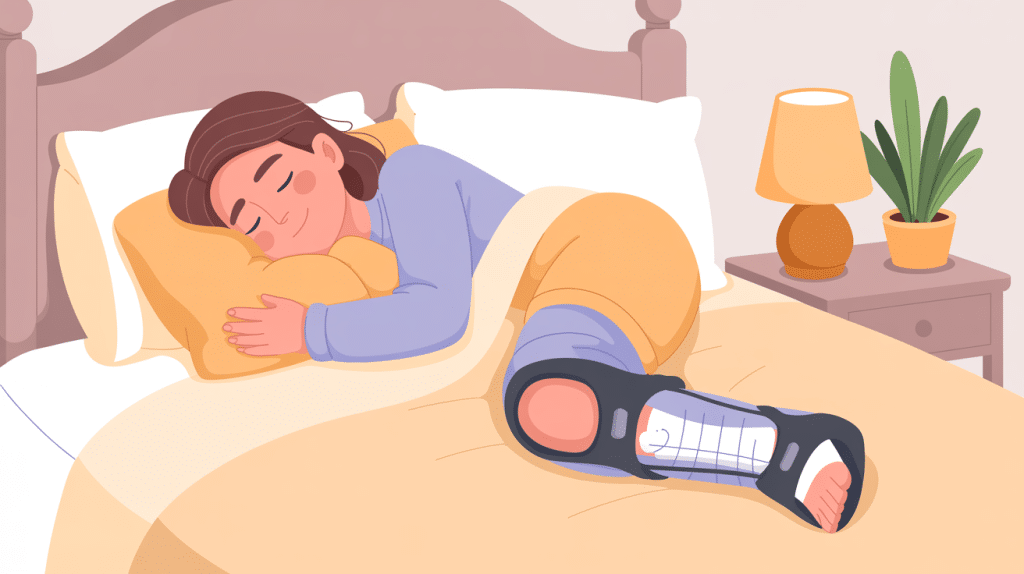
If you prefer to sleep on your side, wait until your doctor says it’s okay.
When allowed, sleep on your non-surgical side and place a firm pillow between your knees. This keeps your body in better alignment and takes pressure off the healing knee.
For some people, this position is difficult at first, especially if you’re dealing with torn meniscus pain at night. Stick to back sleeping until side sleeping feels safe and pain-free.
Sleeping on Your Stomach (Why to Avoid)
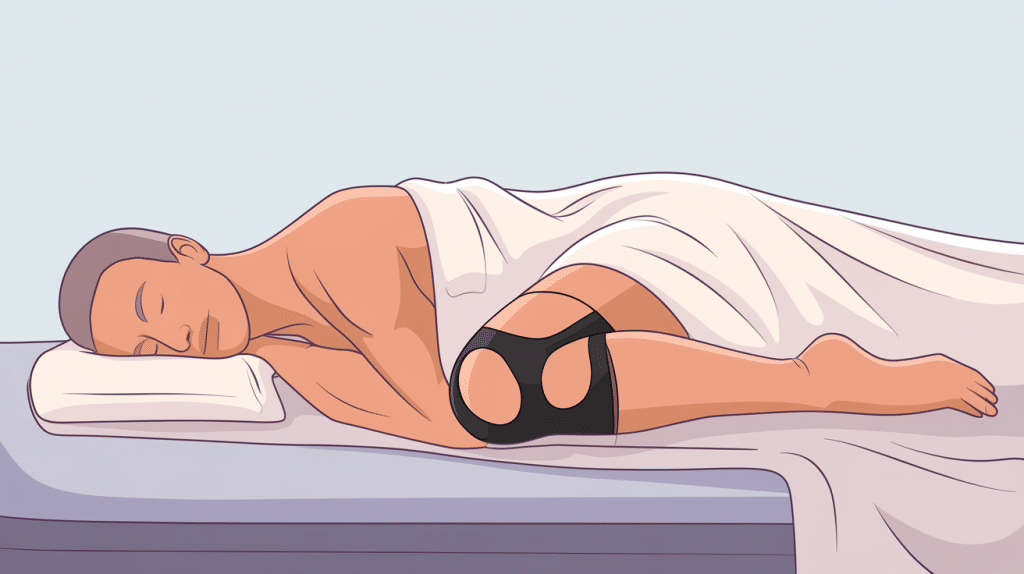
Avoid sleeping on your stomach after surgery. This position can twist your leg or bend the knee in a way that adds strain. It also makes it harder to keep the leg elevated, which can lead to more swelling.
Back or side sleeping (when approved) are the better options when figuring out how to sleep after meniscus surgery safely and comfortably.
How to Elevate Your Leg Properly While Sleeping
Elevating your leg the right way can help reduce swelling, ease discomfort, and speed up healing after meniscus surgery. Follow these simple steps to get it right:
- Lie flat on your back in bed: Start by getting into a comfortable, flat position on your back. This keeps your body aligned and supports the healing knee.
- Place pillows under your lower leg: Stack 1–2 firm pillows under your calf and ankle, not your knee. This helps keep your leg straight and avoids pressure behind the joint.
- Raise your leg above heart level: Make sure the height of the pillows lifts your foot slightly above your heart. This helps fluid drain away from the knee, reducing swelling and tightness.
- Check for support and stability: Make sure your leg isn’t wobbling or sliding off the pillows. Adjust as needed until it feels steady. You can use a towel roll or wedge pillow for extra support.
- Avoid placing anything under the knee: Never prop the knee itself. Pressure behind the knee can reduce circulation and may slow down recovery.
- Repeat nightly until swelling improves: Elevate your leg each night, especially in the first few weeks. It can help ease torn meniscus pain at night and make sleep more comfortable.
When your leg is elevated properly, it helps manage inflammation, supports circulation, and prevents fluid buildup. That means less pressure and pain, and better sleep.
Sleeping With a Brace: Do You Need It?
Most people need to wear a brace while sleeping for the first few weeks after meniscus surgery. It keeps the knee straight and prevents movements that could delay healing.
Use the brace as your doctor directs. Make sure it fits properly, tight enough to stay in place but not so tight that it cuts off circulation. Lock it at the correct angle, usually straight, unless told otherwise.
Back sleeping is the most stable position when wearing a brace. Use pillows under your ankle and calf to keep the leg supported and slightly elevated.
Avoid side sleeping unless your doctor clears it. The brace can shift or twist in that position.
Check for skin irritation in the morning. Redness, pressure spots, or pain should be reported to your doctor.
Wearing the brace at night helps protect the joint and limits torn meniscus pain at night by preventing strain while you sleep.
Managing Pain and Discomfort at Night
Pain and swelling are common after surgery and can make it hard to fall asleep or stay asleep. Handling these symptoms the right way at night can help ease discomfort and improve your rest.
- Pain medication: Take your prescribed pain meds 30 to 60 minutes before bed so they kick in as you’re falling asleep. Always follow your doctor’s dosage instructions.
- Ice therapy: Apply an ice pack to the knee for 15 to 20 minutes before bedtime. This helps reduce inflammation and numbs sore areas. Wrap the ice in a thin towel to protect your skin.
- Leg elevation: Keep your leg raised slightly above heart level using firm pillows. This helps reduce fluid buildup and can ease torn meniscus pain at night.
- Limit stimulants: Avoid caffeine and alcohol in the evening. Both can make it harder to sleep and may increase inflammation or pain.
- Cut screen time: Turn off phones and TVs at least 30 minutes before bed. Blue light disrupts melatonin production, which affects your ability to sleep.
- Adjust your setup: If pain gets worse in bed, check your sleeping position, brace tightness, or pillow support. Make small changes until you feel more comfortable.
Managing pain the right way makes sleep easier and recovery smoother. Talk to your doctor if nighttime pain gets worse or doesn’t improve over time.
Creating a Sleep-Friendly Environment
A supportive sleep setup makes recovery easier. Start with a medium-firm mattress and firm pillows that keep your body aligned. Use extra pillows under your legs to keep them elevated and stable through the night.
Keep your bedroom quiet and dark. Use blackout curtains to block light and a fan or white noise machine to drown out background sounds. A cooler room, around 65to68°F, can also reduce swelling and help you sleep more deeply.
Set up essentials within arm’s reach. Keep pain medication, water, and your phone close so you don’t have to get up during the night. Wear loose, breathable clothes that won’t press on your knee or brace.
Let others in your home know you need rest. If pets interrupt your sleep, consider keeping them out of the room until you’re further along in recovery.
Sleep Hygiene for Faster Recovery
Keeping a steady sleep routine can improve both the quality of your sleep and your recovery speed. Go to bed and wake up at the same time each day, even on weekends. A consistent schedule helps your body get into a natural rhythm.
Wind down with a short, relaxing routine before bed. This could be reading, light stretching (if approved), or deep breathing. Avoid screens for at least 30 minutes before sleep, as blue light from phones and TVs can make it harder to fall asleep.
Keep your bedroom calm and distraction-free. Dim the lights, lower the noise, and don’t bring work or stress into the space. A clean, quiet setting helps you sleep more deeply and for longer.
Skip heavy meals, caffeine, and alcohol in the evening. These can disrupt your sleep cycle and increase nighttime discomfort.
Practicing good sleep hygiene each night makes it easier to fall asleep, stay asleep, and heal more effectively after meniscus surgery.
Wrapping Up
Sleeping well after knee surgery isn’t easy, but now you’ve got a better idea of how to make it work. From finding the right position to managing pain and setting up your room for better rest, you know what can really help you recover.
Take a few moments tonight to apply what you’ve learned. I’ve found that even small changes, like using a pillow under the leg or elevating it slightly, can ease the discomfort and improve your sleep.
And remember, knowing how to sleep after meniscus surgery is just as important as doing your daily rehab. Stick with your doctor’s guidance, be patient with your progress, and give your body the rest it needs to heal.
Need more help with recovery and home care? Check out my other blogs for simple, supportive tips to make healing feel a little less overwhelming.


